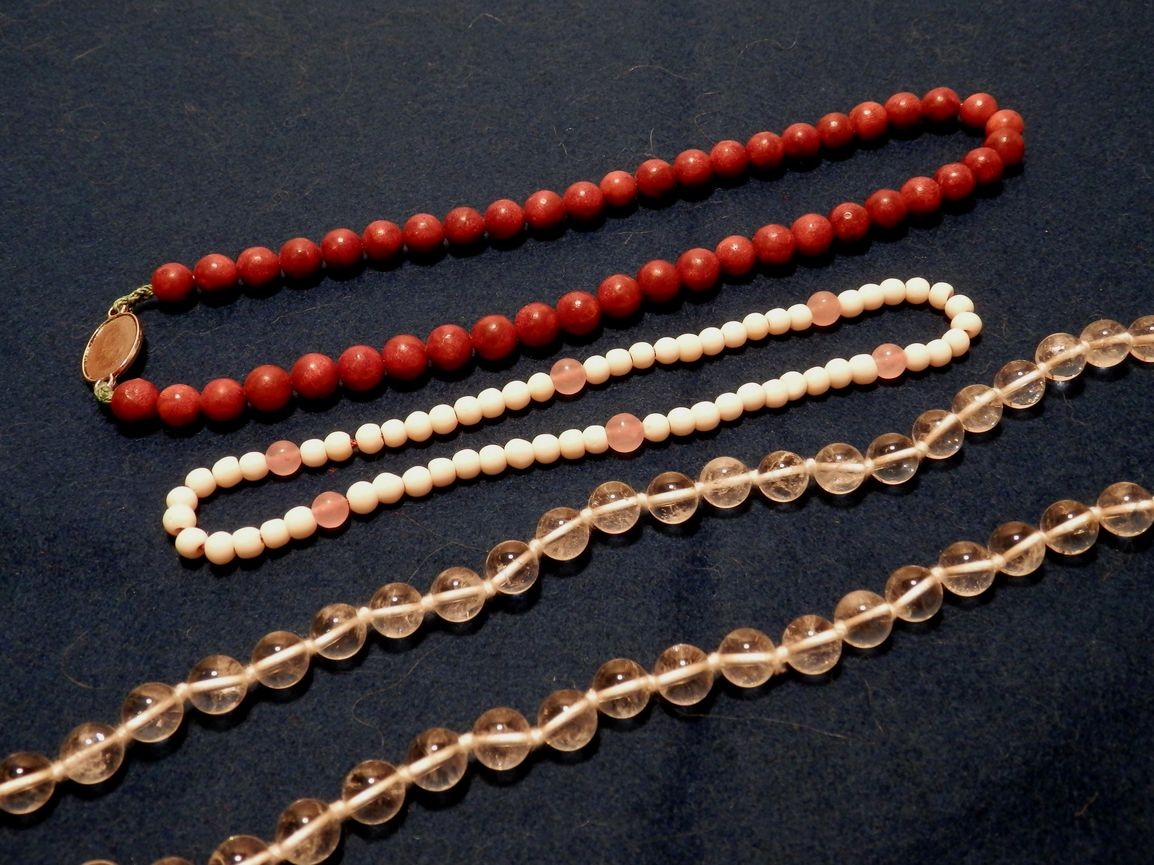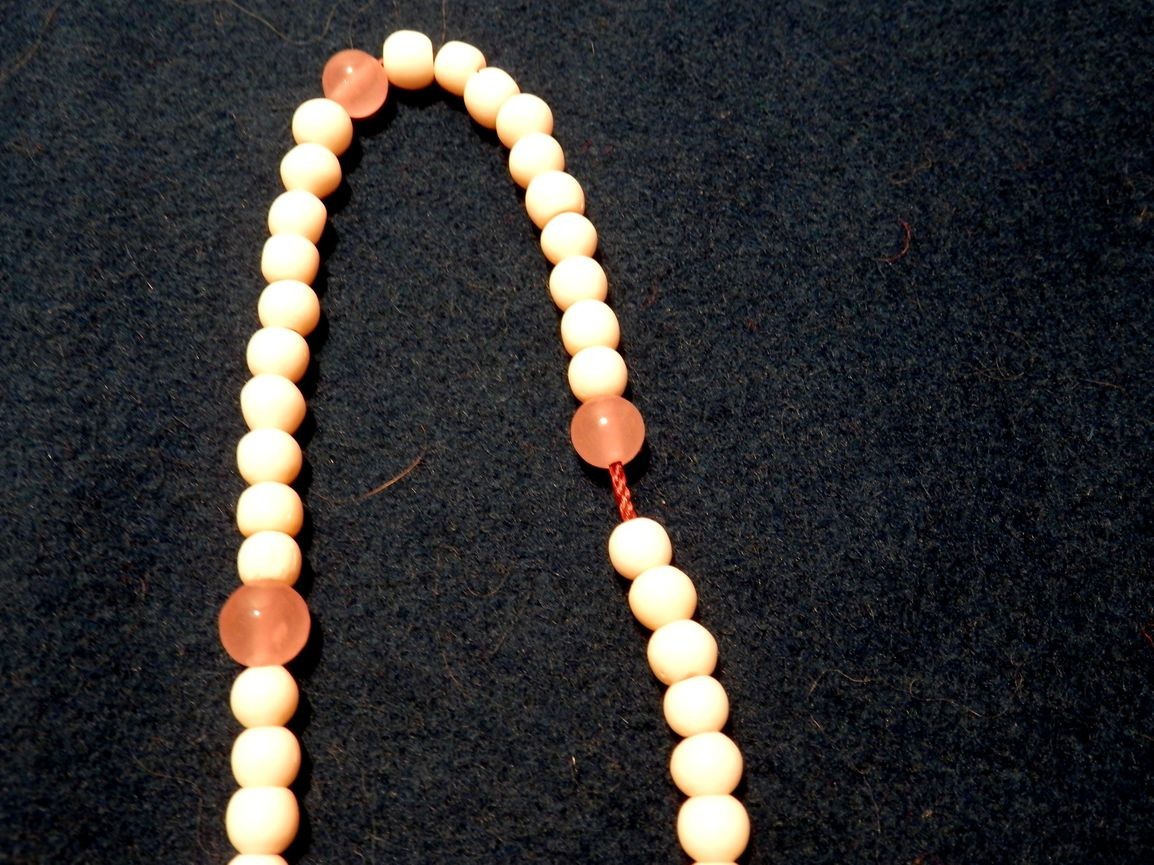Gebete am laufenden Band / prayer beads on a string
Geschrieben in Alltag am 09.08.2016 von Eva-Maria
Da Religion eine bedeutende Rolle im Leben des mittelalterlichen Menschen spielte, ist es nicht verwunderlich, dass sich auch religiöse Gebrauchsgegenstände zu Statussymbolen weiterentwickelten. So passiert beim Paternoster - der Gebetskette, die als Vorläufer des modernen Rosenkranzes gilt - und der ursprünglich nur zum Abzählen der "Vater Unser" und "Ave Maria" diente. Da die Kette allerdings offen am Gürtel getragen wurde, bot sie die perfekte Gelegenheit, zugleich auch finanziellen Wohlstand zur Schau zu stellen, z.B. durch teure Materialien wie Koralle oder Bergkristall. Der obere Paternoster erfüllt genau diese Kriterien und ist daher als Accessoire für einen höheren Stand geeigent. Der untere Paternoster ist ungleich einfacher und auch für die Handwerker/innen-Schicht denkbar.
As religion played an important role in the daily life of medieval people, it is hardly surprising that religious objects were converted to status symbols. A vivid example are paternosters - the beaded prayer chains that are regarded as precursors of modern rosaries - that werde originally used to count the number of "Our Father" and "Hail Mary" prayers. As these paternosters were worn openly on the belt, they provided the perfect opportunity to display the wearer's wealth as well, e.g. with the use of expensive materials for the beads such as coral or rock crystal. The upper paternoster is an example of a luxury accessory and would have been used by a woman of high social standing and wealth. The white paternoster is much simpler regarding the materials used and might have been owned by a craftswoman.

Based on pictural evidence from the Tyrolean area I made two paternosters. Both are closed to a ring as this form seems to have been used predominatly by women.

The paternoster features 46 coral beads on a green fingerloop string made of silk. The middle part is silver-coated and measures 13 x 25 mm. The string was made from 4 loops with the help of this video.

This paternoster consists of 60 bone beads and 6 dividing beads made of rose quartz. The madder dyed string was made from 3 loops with the help of this video.

